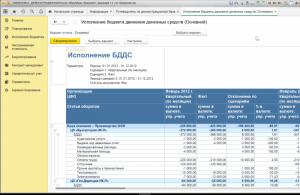Until LED products fully enter our lives and production is fully on track, the price of LED lighting equipment will continue to bite. But why wait or, even worse, overpay, if you can assemble a spotlight of the required power with your own hands according to our instructions.
Electrical features of working with LEDs
If you intend to use LED technology, it would not hurt you to learn about some of the intricacies of working with it, which can partly be called disadvantages. On the one hand, LEDs are compact, economical and durable light sources, but on the other?
Solid-state semiconductor elements are critically sensitive to high temperatures in the core. A phenomenon called degradation is the loss of dopants from a semiconductor, resulting in a decrease in luminous flux or eventual failure.
 a) design of a conventional LED: 1 - anode; 2 - cathode; 3 - conductor; 4 - crystal; 5 - plastic lens
a) design of a conventional LED: 1 - anode; 2 - cathode; 3 - conductor; 4 - crystal; 5 - plastic lens
b) design of a high-power LED: 1 - housing; 2 - conductor; 3 - heat sink; 4 - crystal; 5 - lens; 6 - cathode
At temperatures above 60 °C, the LED degrades very quickly and the 50 thousand hours declared by the manufacturer ultimately turns into 3-5 thousand. And the more powerful a single LED, the higher the likelihood of it quickly aging due to overheating. Therefore, when developing lighting devices, the main focus is on a high-quality heat removal system, as well as dividing the emitter into several points and their correct arrangement.
Another feature of LEDs is that they can only pass a limited number of electrons per unit time. The network supplying the LED must be current stabilized, otherwise severe overheating and associated negative consequences will occur. The current in the power circuit is regulated by the applied voltage and is limited by a resistor on each of the LEDs. When developing a connection circuit, you need careful calculation: set the voltage too high and the LEDs will quickly fail, but set it too low and they will only light at half power.

The simplest spotlights have only one light-emitting element, but in high-power devices it is recommended to distribute the load for more efficient heat removal. In such cases, the connection can be serial, parallel or mixed. The first is not entirely safe: if one of the LEDs burns out, it can either break the circuit or bypass it. With a parallel (and especially mixed) connection, there is a high risk that after one consumer is disconnected from the circuit, the current in the supply network will increase to unacceptable values.
Point sources and matrices: selection, procurement
There are three types of LEDs that are wise to use in making floodlights. Please note that when assembling a lighting device from several LEDs, they must be identical both in type and in current-voltage characteristics. It is also recommended to purchase up to a dozen spare diodes as a repair kit and in case of damage during installation.
LEDs in the form of a plastic capsule with pin terminals are suitable for the manufacture of small spotlights and flashlights. This is the cheapest type of product, and the final product will ultimately be relatively easy to repair.

The second type is ultra-bright white LEDs on a metal substrate. They should be used in high-power lighting devices; it is quite easy to remove heat from them.

Another type of LED is high-power LED matrices. It is not recommended to independently manufacture spotlights with a matrix power of 20 W or higher: simple measures will not effectively remove heat.

Housing and reflector parts
There are a number of solutions for the body of a homemade spotlight. If a high degree of dust and moisture protection is required for a street lamp, then a car headlight is suitable. The rim of the lamp base will need to be cut out and secured over the panel with the LED matrix. The disadvantage of the method is the limited power of the spotlight, given that only one matrix will fit in it.

If you place several LEDs or matrices on one printed circuit board or mounting panel, the housing can be made of tin or sheet steel. On the workpiece, mark the development of a truncated pyramid: a square in the center and identical isosceles trapezoids on the sides. Don't forget to leave a "tongue" on one of the sides of each trapezoid to join the petals together. Also, in the smaller base of the trapezoid, you should leave a rectangular strip of about 15-20 mm, and in the center of the square, cut another one with a side 20-25 mm smaller.

When the pattern is ready, sand the edges, bend the body and rivet the seams. Prime the inner surface, cover it with white non-gloss spray paint and leave to dry for 2-3 days. From the front side of the case, place a square piece of glass of suitable dimensions diagonally and lean it against the curved shelves from the inside. Apply a generous amount of white silicone along the contour of the glass and coat the seams of the case with it.

Fasten the mounting panel or board using eight 4 mm bolts, having previously drilled holes along the edges of each shelf on the narrow side of the case. To ensure the plate fits tightly, use a PVC foam door seal. Tightening the bolts won't be easy; their heads are inaccessible, so use a pair of locked nuts on the end.
Installation of radio elements
If you chose LEDs with pin terminals, you will need a PCB plate to mount them. Think over the layout and draw current-carrying paths with a permanent marker. The anodes of all LEDs (long tails) can be assembled onto one ground bus. The cathodes are also collected at one point, but a current-limiting resistor should be connected in series to the power circuit of each LED.

Its calculation is simple: subtract the LED voltage from the supply voltage and divide by the maximum permissible current. To be on the safe side in case of source voltage fluctuations, the permissible LED current can be deliberately lowered to 90-95% of the nameplate value.
 An example of an LED matrix circuit of diodes with an operating voltage of 3 volts and an operating current of 20 mA
An example of an LED matrix circuit of diodes with an operating voltage of 3 volts and an operating current of 20 mA
The approximate supply voltage for one LED is 4 V. If the source produces more, it is advisable to turn on the diodes in a mixed circuit, where garlands are connected in parallel, each of which has one LED for every 4-5 V of voltage. The permissible current for such a series assembly is determined as the sum of the permissible currents of each, and the forward voltage remains the same, provided that this parameter is the same for each LED.

Having placed the elements and drawn the paths, etch the PCB plate in a solution of citric acid (30-50 g), 3% hydrogen peroxide (100 ml) and table salt (2 teaspoons), periodically checking the degree of dissolution of unprotected areas. Drill holes for the pin leads with a 1.5-2 mm drill, drill eight holes to attach the board to the case, and then carefully tin the current-carrying parts with solder and rosin.
 You can also use circuit board for LED matrix
You can also use circuit board for LED matrix
If you assemble diodes or matrices on a cooling substrate, they are mounted using a hinged method. An aluminum comb-type radiator should be selected as a mounting panel. Each LED is attached using two or three holes, mark them all at once and drill from the back of the radiator with a 2.5 mm drill.

For fastening, use short 3.5x11 mm self-tapping screws for metal profiles, but without a drill at the end. Before fixing the diode, apply a small amount of KPT-8 thermal paste to the substrate.

The cathode (-) and anode (+) of LEDs with a substrate are marked, the connection diagram and calculation of protective resistors are the same for all types. The elements should be connected to each other using a piece of telephone wire. To avoid unnecessary work, the anodes can be immediately soldered with short jumpers to the body of the aluminum radiator.
Power supply question
After assembling the LEDs, you will be left with two terminals, which would be nice to apply voltage to, but where will you get it from? Household power supplies are of little use here; to power LEDs, you need an LED driver that produces a pulsating direct current of a stable value.

For most products, a driver for interior lighting systems or for LED strips is suitable. It is better to purchase a power supply in advance in order to use it to calculate the number and connection diagram of diodes according to the output voltage and total stabilization current.
For small crafts, you can use general-purpose power supplies with an output pulsating current of 0.5-1.5 A and a voltage 3-5 V higher than the direct voltage of the diodes. You can stabilize the power supply using the LM317 chip; for more powerful spotlights, use LM350 and LM338, respectively, increasing the power of the source.

The current limitation of the microcircuit can be adjusted by changing the resistance of the resistor. Its rating is defined as 1.25/I, where I is the current of the LED or assembly.
With the development of technology, lighting devices are advancing in leaps and bounds. The development of old technologies and the emergence of new ones force us to constantly adapt and modernize our lighting equipment. Now the time has come to put aside the outdated halogen spotlights, which have already become ineffective in comparison with newer LED devices.
Design features
Spotlights based on LEDs have much greater energy savings, can operate for more than ninety thousand hours, and require absolutely no maintenance. They are able to function in any weather conditions, and the quality of the emitted light has become much better.
LED spotlight device
The design of such devices is incredibly simple, which makes it easy to make an LED spotlight with your own hands at home.
The simplicity of the design allows you to avoid any serious damage, and those that may occur can be easily and quickly repaired.
The LED spotlight consists of a housing, a bracket for fixing, an LED matrix and a driver that regulates the operation and supply of electricity. The matrix consists of static diodes, which are fixed to the board and protected by special polymers from external influences.
Required parts for assembly
If you decide to make a spotlight with your own hands, then you probably have a question about what parts you need to prepare in order to make yourself a high-quality device for use.
 We have prepared for you a small list of necessary parts that you need to collect in your garage or buy those that are missing:
We have prepared for you a small list of necessary parts that you need to collect in your garage or buy those that are missing:
- Of course, we need the LED matrix itself with the driver installed. You can buy it at a specialized electronics store or take it off an old flashlight. If you use LEDs from a flashlight, then make sure that their power will be enough for you.
- You can select the required housing from any materials. You can make it from plywood or metal, or take one from an old halogen flashlight. If this is not possible, you can buy a housing for the flashlight, it is very cheap. You should select it based on your preferences and how it will be used. If for decoration, then you should make a beautiful and harmonious design of the body. For simple household use, it is enough to use any nondescript floodlight body.
- Connecting wires.
- Material for creating a reflector. Thick food foil is perfect for such purposes. It can be bought at any supermarket.
- Sealant and glue.
- If you want to make a powerful spotlight, 100 watts or more, then you also need to add a radiator with a cooler for cooling.
Assembling a homemade spotlight
To make yourself a high-quality LED spotlight, you need to approach the assembly process as seriously as possible. By collecting all the necessary parts in advance, you have only done a small part of the work.
Let's take a closer look at the steps to assemble a 220-volt LED floodlight.
- If you are using an old case, you must remove all foreign parts from it. You should end up with a completely empty case without extra cartridges, internal fasteners, etc. If you are installing a radiator and cooler, then you need to make holes in the side walls to create ventilation.
- The next step will be to assemble 220 volt LEDs into a single structure, and secure the entire mechanism to a single base. Connect wires of the required length to the contacts so that you can easily bring them to the outside of the case.
- We install the resulting structure in the body and secure it with glue. Thus, you can make a high-quality fastening without damaging the case and significantly saving time.
- We take the wires out into the corresponding hole and secure them in the hole using silicone sealant. The sealant is necessary to make a sealed structure, to prevent moisture from entering and the possibility of damaging the mechanism.
If you want to make a powerful 220-volt LED spotlight, then you also need to add a radiator. We install it together with the entire LED board. You can also secure it with glue or wrap it with wire.
Connecting the lamp to the network
To connect our spotlight to a 220 volt network, it is necessary to make preliminary preparations. Think in advance about the place where the spotlight will be installed and place the electricity transmission wires there.
Don’t skimp and make them with a reserve; perhaps you want to move or adjust the installation height of the device a little over time.
You will need a power supply that will stabilize the voltage and supply not 220 volts, but 12 or 24, depending on the LEDs you use.
 When connecting the power supply wires and the contacts coming out of the device, do not reverse the polarity. LEDs will not work if connected incorrectly. In the worst case, they may fail altogether, and all the work will be done in vain. Carefully insulate the connection point and preferably cover the entire wire with a special corrugation or plastic cover.
When connecting the power supply wires and the contacts coming out of the device, do not reverse the polarity. LEDs will not work if connected incorrectly. In the worst case, they may fail altogether, and all the work will be done in vain. Carefully insulate the connection point and preferably cover the entire wire with a special corrugation or plastic cover.
If you are installing a spotlight on the street, take care about the quality of its fastening. It is necessary to secure the device as efficiently and firmly as possible so that the mounting location can withstand gusts of wind, changing weather conditions, accumulated snow, and others.
New generation lighting devices are radically different from older models. They are economical, demonstrate high power and require virtually no maintenance.
The steady demand for high-quality light sources has caused the appearance on the market of a large number of products from Southeast Asian countries that are neither reliable nor durable.
A DIY LED spotlight will allow you to get a fairly high-quality product. Let's look at how to make a cheap and fully functional spotlight from improvised materials.
 The design of the LED floodlight is simple. The main elements of the device are:
The design of the LED floodlight is simple. The main elements of the device are:
- Driver.
- Light-emitting diode.
A driver is a block or power source that receives standard 220 V and converts it into the power needed to operate the LED flashlight. A feature of drivers that distinguishes it from adapters is the emphasis not on voltage or power, but on stable current (for adapters, the main parameter is voltage).
Attention! When purchasing a driver, you need to pay attention to the main indicator. If the value is indicated in volts (for example, 24 VDC), then this is an adapter.
The LED in this case is not a separate element, but an assembly of several units with the same characteristics. They are manufactured using a special technology that allows one to obtain identical crystals. A set of crystals connected in series and parallel makes up an LED matrix or LED-cheap. A distinctive feature of the matrix is the large release of heat, which destroys the crystals and requires cooling or removal using radiators.
In addition to the main components, the spotlight consists of the following elements:
- Frame.
- Reflector.
- Lens.
The purpose of the body is clear without explanation. The focusing lens creates a compact and directed light flux, more concentrated and dense. The role of the reflector is somewhat different than in conventional spotlights. The original LED optics produce a beam of light with an opening angle of 120°. Therefore, the function of the reflector is not so much to reflect multidirectional rays as to compress the flow.
Required materials and parts
You can make a homemade LED spotlight from parts that you have on hand or purchased at a specialized store. It is necessary to think through the design so that all elements match each other as much as possible. It is not necessary to purchase the necessary materials; you can use an old lamp, take LEDs from a broken street lamp, etc. Let's look at what elements are needed to assemble a powerful LED spotlight.
Lamps
 The easiest option is to purchase a ready-made LED lamp with a standard base and connect it to the network. But such a homemade product can hardly be called a spotlight. The best option is a matrix based on SMD 5050 LEDs, inexpensive and high-quality, providing a bright, powerful beam of light. They are mounted on a thin fiberglass laminate mounted on a thick aluminum plate, which serves as a heat sink. You can use ready-made radiators with a large number of plates, the efficiency of which is much higher, but the dimensions do not always allow them to be placed in the limited space of the spotlight housing.
The easiest option is to purchase a ready-made LED lamp with a standard base and connect it to the network. But such a homemade product can hardly be called a spotlight. The best option is a matrix based on SMD 5050 LEDs, inexpensive and high-quality, providing a bright, powerful beam of light. They are mounted on a thin fiberglass laminate mounted on a thick aluminum plate, which serves as a heat sink. You can use ready-made radiators with a large number of plates, the efficiency of which is much higher, but the dimensions do not always allow them to be placed in the limited space of the spotlight housing.
Read also Choosing an infrared (IR) LED floodlight for video surveillance
Housing material
 The body can be any metal or plastic box of appropriate shape and size. The best option is to use a ready-made housing from a halogen spotlight. It is sealed, designed for outdoor use, and is the right size. For people with the skills and capabilities, it will not be difficult to make the case themselves from sheet aluminum. This option will allow you to place a high-quality radiator and ensure the installation of the most effective reflector with an optimal opening angle. You should also consider the installation of switches and the method of attaching the housing - make a socket for the bracket or a mounting strip attached to the outside.
The body can be any metal or plastic box of appropriate shape and size. The best option is to use a ready-made housing from a halogen spotlight. It is sealed, designed for outdoor use, and is the right size. For people with the skills and capabilities, it will not be difficult to make the case themselves from sheet aluminum. This option will allow you to place a high-quality radiator and ensure the installation of the most effective reflector with an optimal opening angle. You should also consider the installation of switches and the method of attaching the housing - make a socket for the bracket or a mounting strip attached to the outside.
Power supply
Purchasing a ready-made driver will help you make a spotlight with your own hands much faster, but for people who are trained and have certain skills, it is not difficult to make a power source yourself. The main task is to ensure stable current and voltage.
Important! If you have doubts about your abilities, it is better to refuse to make a driver yourself and purchase a ready-made one. Errors in calculation or assembly can lead to fire.
Circuit and printed circuit board of a simple LED spotlight
 There are a large number of power supply circuits of varying degrees of complexity. The easiest (and most reliable) way is to use the classic version of the circuit with a quenching capacitor:
There are a large number of power supply circuits of varying degrees of complexity. The easiest (and most reliable) way is to use the classic version of the circuit with a quenching capacitor:
This option is a transformerless type of power source, allowing you to get a very compact device assembled from inexpensive and accessible parts that does not require complex setup. The input non-polar capacitor with a capacity of 1 μF is paralleled with a 1 mOhm resistor, which can be replaced with any other sample with a capacity from 240 to 1 mOhm and a power of 0.25 W. They are connected to one arm of a diode bridge, which is assembled using 4 1N4007 diodes. The rectified voltage is additionally smoothed by a 10 µF 400 V polar capacitor. The LEDs are divided into 2 groups connected in parallel. Each group has 50 units connected in series. Each branch carries a current of 19 mA, which corresponds to the nominal value.
The printed circuit board does not require high precision and can be produced on a laser printer.
To effectively remove thermal energy, the reverse side is left untinned. The location of the mounting holes is selected to ensure the tightest possible contact with the heat sink plate or radiator.
Spotlight assembly procedure
 Let's look at how to assemble an LED spotlight with your own hands.
Let's look at how to assemble an LED spotlight with your own hands.
- Assembly begins by soldering the LEDs onto the circuit board. To do this, use a low-power soldering iron or station. After completing the work, it is necessary to check each LED individually and the entire matrix for functionality.
- Then the driver is assembled. Usually they use a mounted method (without a mounting plate), since there are few parts. Their location must be carefully considered so that they fit freely in the compartment. Make sure to leave enough space for the power cord.
- To avoid short circuits, the leads of the parts should be insulated with cambric or heat-shrinkable tubing. The assembled power supply is checked for functionality, first separately using a multimeter, then with a load (a test connection of the LEDs is performed). Detected deficiencies are eliminated.
- After a successful test switch-on, the final assembly of the spotlight begins. The matrix with LEDs is tightly attached to the radiator. If you don’t have a ready-made one, you can use an aluminum corner bent from a thick (about 5 mm) plate. One shelf of the corner is screwed to the body of the spotlight, the matrix is attached to the second. It is necessary to apply thermal paste between it and the plate for better removal of thermal energy.
- Then install the reflector. If you don’t have a ready-made one, you can get by with installing aluminum foil, a structure made of mirror plastic or other materials with high reflective abilities. The best option is the use of rigid sheet materials that make it possible to produce a durable structure with a given configuration.
- The assembly is completed by installing the protective glass or focusing lens. Glass is most often used, since the lens is much more difficult to find and its price is quite high. If you plan to use the spotlight for street lighting, all joints around the perimeter should be sealed from water with sealant.
You can make an excellent LED spotlight with your own hands, spending only 257 rubles on the filling! Even if you are not familiar with electronics and have never soldered a single printed circuit board with radio components in your life!
This spotlight can be successfully used for landscape lighting of a summer cottage, for accent lighting of a house, for illuminating an object at a distance of 20 - 30 m when using external surveillance cameras... And much more!
But, most importantly, your spotlight will consume only 6 W of electrical power with a stable luminous flux when powered in the voltage range of 85 - 256 Volts!
Let's get down to business. We really liked the Kreonix STD-JCDR-6W-GU10-COB/WW LED lamp, developed by Russian engineers and manufactured by Kreonix.
We tested it and were very pleased with the high brightness of the LED, the temperature conditions and the operation of the driver (current stabilizer) at various supply voltages. After which, we recommended this lamp for sale to our partners.
The lamp turned out to be universal. In addition to using the new LED lamp Kreonix STD-JCDR-6W-GU10-COB/WW in turned ceiling lamps, in lighting decorative niches and in accent lighting of interiors, in our opinion, the lamp is also suitable for outdoor use, provided it is adequately protected from external influences .
From this lamp we will make an LED spotlight with our own hands.

Unlike ready-made LED spotlights, the Kreonix STD-JCDR-6W-GU10-COB/WW lamp does not shine 180 degrees, scattering precious light to the sides and into the sky, but with a beam with an opening angle of 30 degrees. This is what you need for a spotlight! After all, with the same LED power, you can illuminate objects located several times further away!
As a housing, we used the housing from an old 150 W floodlight. But you can buy a new one. It's very cheap. The halogen spotlight had to be disassembled and the unnecessary ceramic socket removed.
We glued a new cartridge for the GU10 base to the center of the case using silicone sealant. We used glue so as not to bother with making the mechanical fastening of the cartridge. After all, we didn’t have any special machines or tools at hand.
In the center of the foil reflector that stood in the spotlight, we cut out a hole with nail scissors into which the base of the Kreonix STD-JCDR-6W-GU10-COB/WW LED lamp should go.

We started assembling the LED spotlight without waiting for the silicone sealant to set. This was done not only because of our haste, but also to control the direction of the light flux from the lamp. In addition, the Kreonix STD-JCDR-6W-GU10-COB/WW LED lamp with a socket fits precisely in the housing and, when the glass is closed, is lightly pressed by it.
This is the best way to fix a lamp with a socket while the adhesive sealant is curing!
We routed the wires from the socket into the mounting box on the body of the spotlight. But the place where the glass adjoins the removable frame had to be additionally sealed with silicone (transparent) sealant. Just in case, we sealed other leaks and gaps.
After assembly, we turned on the lamp and rejoiced - we did it! We made an LED spotlight with very remarkable characteristics with our own hands! By the way, there is enough space in the case for two LED lamps if you install them side by side. But we don’t need such brightness now.

Immediately after assembly, if the weather was not rainy, we mounted our new LED floodlight on a pole, connected it to the photo relay line and eagerly waited for nightfall to compare the homemade light with the FL-10 10 W factory LED floodlights available on site...

...We were not disappointed! The narrow beam of the Kreonix STD-JCDR-6W-GU10-COB/WW lamp pierced the darkness about 5 times further than the larger FL-10, illuminating what we needed!
And further. You can check the quality of the case sealing after rain: there should be no condensation on the inside of the glass.
Since ancient times, humanity has sought to master light and use it for its own benefit, because, unlike some animals, not possessing special night vision, man became vulnerable at night. Progress has the peculiarity of accelerating in a geometric sequence; this statement absolutely applies to the development of lighting technology. For a long time, before the invention of electricity, the only source of light was live fire, then incandescent lamps appeared, and a new era began. Gradually, new types of lamps appeared - fluorescent, halogen, until finally the most modern and technologically advanced light source appeared - LEDs. At first they were imperfect and not nearly as reliable as they are now, and they were very expensive. The situation has changed - LED modules have become affordable, reliable and of high quality. Possessing excellent technical characteristics and operational properties, they have firmly established themselves in the lighting equipment market. In this article we will talk about a very affordable and simple source of bright, uniform light based on LEDs - an LED floodlight. Characteristics of LED spotlights, how to assemble an LED spotlight with your own hands, how to connect an LED spotlight - we will touch on all this in the process of getting to know this device.
An LED spotlight is a lighting device, the design of which consists of a voltage converter, a powerful LED, a radiator to remove excess heat and a reflector to enhance and direct the light flux. It can emit, like standard white or warm light, or be colored, with the ability to change RGB colors. The scope of application of this device is practically unlimited. LED floodlights are used for home and industrial purposes, illumination of country houses and cottages, illumination of entrances and parking lots.

Advantages of diodes over halogen, fluorescent, energy-saving and incandescent lamps
Flashlights based on LED modules have a number of technical and operational advantages over outdated lamp analogues:
- The main advantage is the low power consumption and high efficiency of devices based on LED modules. Consuming 8-12 times less electricity, LED lamps provide the same brightness of luminous flux. This is a significant cost saving, and when it comes to industrial scale, when lighting in industrial production is carried out, for example, by a hundred 500-watt flashlights that pump out energy around the clock, a 10-fold reduction in consumption will lead to colossal cost savings.
- Quality of light emission. Unlike outdated lamp-based analogues, LED lamps provide the most uniform illumination over the entire area and distance, free from twitching and flickering. This is, firstly, the most comfortable environment for the eyes, which does not pose a threat to vision or visual discomfort. Secondly, ideal and undistorted color rendering, which in many industrial production can be among the main priorities in connection with production activities.
- Durability and reliability. LED modules do not depend in operational terms on the number of switches on and off. If you are using an LED floodlight with a motion sensor, this point is very relevant. Due to the constant response to movement, the spotlight will constantly turn on and off. LED lamps are designed for 100 thousand or more hours of operation, which is many times more than any lamps. Together with the simplicity and reliability of the design, modern materials that are resistant to mechanical stress, a set of these technical characteristics makes LED lights an ideal choice for illuminating any objects, cottages, industrial production, houses, streets and squares.

- Safety and environmental friendliness. LED modules are assembled from modern environmentally friendly materials. They do not require any special disposal methods. When an LED flashlight fails, you can replace the LED module, and simply throw the old one, which has expired, into the trash. Absolutely without any fear for your health. The safety of LED lighting equipment is the highest. It works at low currents, which means that if you decide to make the connection yourself and make some mistake and possibly get an electric shock, it will not be as dangerous as with conventional lamps. As for operational technical characteristics, LED modules do not heat up above 90 degrees during operation, which makes them as fireproof as possible.
- Reliability, simplicity and flexibility of use. LED modules can operate without damage even during severe power surges in the network. The connection is very simple, almost anyone can handle it. The design of the spotlight is also simple and reliable. In order to replace the module when it has exhausted its service life, it will be enough to unscrew a few bolts and disassemble the spotlight body. Next, guided by numerous diagrams and the help of the Internet, disconnect the old module and connect the new one. Then reassemble the housing, place the spotlight back, screwing the housing to the mount on the surface where the flashlight was installed. If you need lighting not only in the standard daytime version, just purchase a color RGB spotlight; it can change color in a very wide range of shades.

There is only one drawback
The only negative is the fairly high cost, which is more than completely outweighed by the combination of advantages. How long an LED lamp will last and the quality of the light emitted will ultimately lead to significant savings in money, nerves, and time.
What characteristics are important to know when choosing
To choose the option that suits you, it is advisable to contact a specialist, describing to him the conditions of use, the required illumination range, the required illumination intensity and other parameters that concern you (brightness and warmth of the light flux, the presence of a motion sensor, solar panels for autonomous operation, etc.) .
How to make your own LED floodlight
If you confidently hold a tool in your hands, you have an unnecessary or broken spotlight, and you don’t want to buy a “pig in a poke” by paying a small but significant amount for a cheap Chinese lantern, but don’t agree to spend a lot of money on an expensive one - assemble an LED spotlight with your own hands. You can even completely solder all the necessary boards; fortunately, there are more than enough diagrams and instructions on the Internet. But if you are not ready to resort to a soldering iron, then the next option is just for you.
Required Components
So, what do we need to make powerful LED spotlights:
the diode itself, cooling radiators, fans (the smallest computer ones will do) and a power board for them (can be taken from a charger, preferably from a high-quality adapter, because we don’t want the fans to fail), an electronic voltage converter to supply power to our diode and adjust the brightness. We will also need, as previously mentioned, an unnecessary old spotlight - as a donor housing, where the entire assembled structure will be installed.

Stage 1 – Start of assembly
We begin the assembly procedure by attaching all the elements to the cooling radiator, which is needed to remove heat from the very powerful LED. The first step is to secure the diode module with bolts using the holes in it. Press the diode firmly onto an even layer of thermal paste.
Then attach fans that will be used for additional active cooling, which will reduce the operating temperature by another 10-20 degrees and extend the already long life of the LED.

Stage 2 – Preliminary performance check and temperature measurement
After connecting all the remaining parts, connect the diode with wires to the current source (converter). Apply current to the diode through a voltage converter to check its functionality. Check the operation of the fans and measure the voltage on the power board for the batteries and the fans themselves, it should be the same. To ensure that the cooling system is operating properly, it is advisable to accurately measure the temperature using an accurate thermometer, such as an infrared temperature gun. The temperature should not be higher than 50-60 degrees.

Stage 3 – Place the insides into the body
After checking all components for operability, you need to place the entire structure directly into the prepared housing. Don't forget to leave a decent opening at the bottom of the structure for the fans to blow out heated air, as well as at the top for air intake.

Install the board that controls the operation of the fans (I remind you, a high-quality one, possibly borrowed from the charging adapter) and connect the wires from the fans.

Step 4 – Final Functionality Check
All that remains is to check the functionality of all elements one last time, cut out a reflector to fit the case from shiny metal (or covered with thick foil) and assemble all the elements of the case together. Having firmly tightened all the bolts connecting the housing elements together, you can begin to use the spotlight on the diode module, which you were able to make yourself. Naturally, you need to have some experience in working with electronics, circuits and boards, as well as desire - after all, for many it will be easier to buy a ready-made device. But a spotlight assembled with your own hands, in addition to causing pride in yourself, will have unique technical characteristics. If you use a powerful 100 watt module, it will replace your 600-800 watt halogen flashlight, which would be much larger, overheat and be very dangerous. The illumination range of such a spotlight, depending on the selected reflector angle, will vary from very large to enormous.

Summary of the article
So, let's summarize the above. In order to choose a floodlight, you need to decide in what conditions it will be used - for industrial (warehouse lighting, production) and domestic purposes (yard lighting, cottage lighting), you can select different floodlights in accordance with their technical characteristics, including power and color temperature . Based on them, select a design for the required illumination range; if necessary, select models with a motion sensor, solar battery or other options. If you want to make an LED spotlight yourself, select and purchase all the necessary components on the radio market and, armed with the tools, assemble exactly what you need. The main thing in both approaches is to purchase quality components or equipment from a seller with a proven reputation. This is the key to positive impressions from future use of the equipment.
Video instruction:








